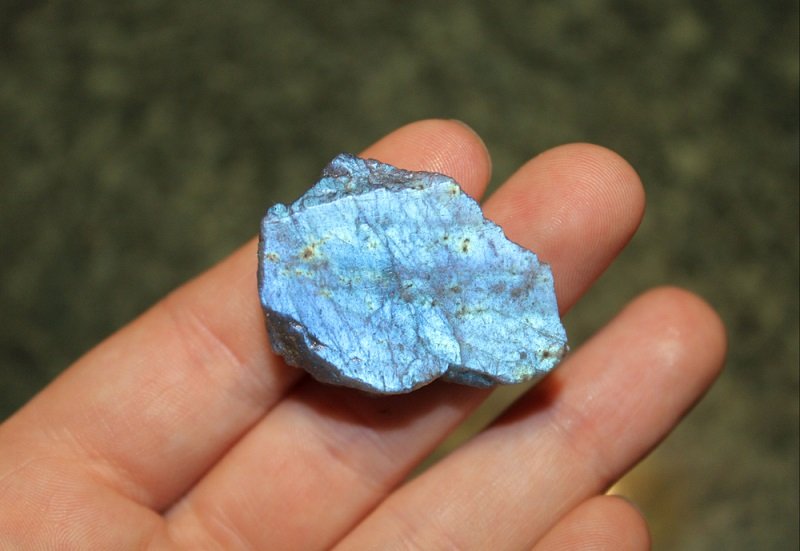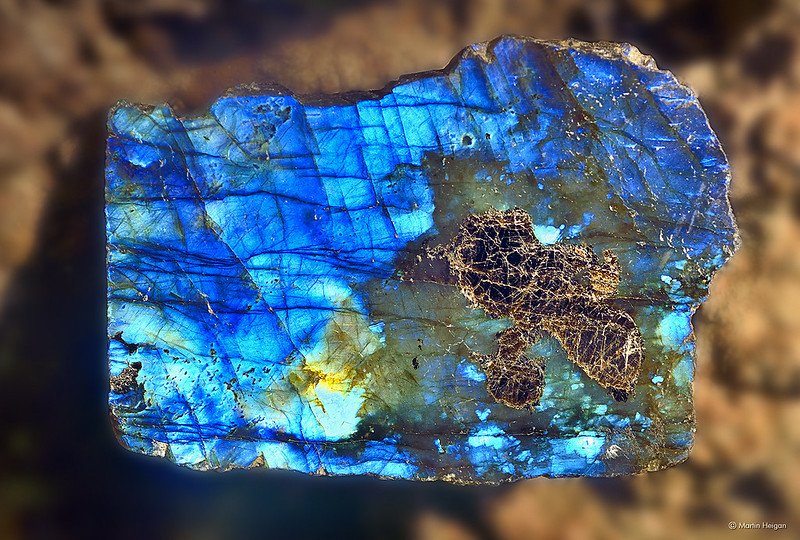What’s This Rock?
If you guessed labradorite, you’re correct!


Why Does Labradorite Display a Play of Colors?
While it has a simple chemical makeup, the primary thing that people are looking for with labradorite is the shimmering effect. The color effect often looks like it’s just under the surface of the stone, creating an effect which is known as a schiller luster or labradorescence.
This rare effect only occurs in a couple of other stones, the main one of interest is moonstone, which is another feldspar-based mineral.
Labradorite’s iridescence, also known as labradorescence, is a metallic-like shimmer of blues and greens that occurs when light diffracts off of closely spaced layers of calcium- and sodium-rich feldspar. As the stone is turned, flashes of blue, green, yellow, and red are visible across properly oriented surfaces.
Labradorite’s iridescence is caused by the interference and refraction of light as it enters and passes through the stone. Light rays are mirrored back and forth while traveling through the layers in the crystal structure.

